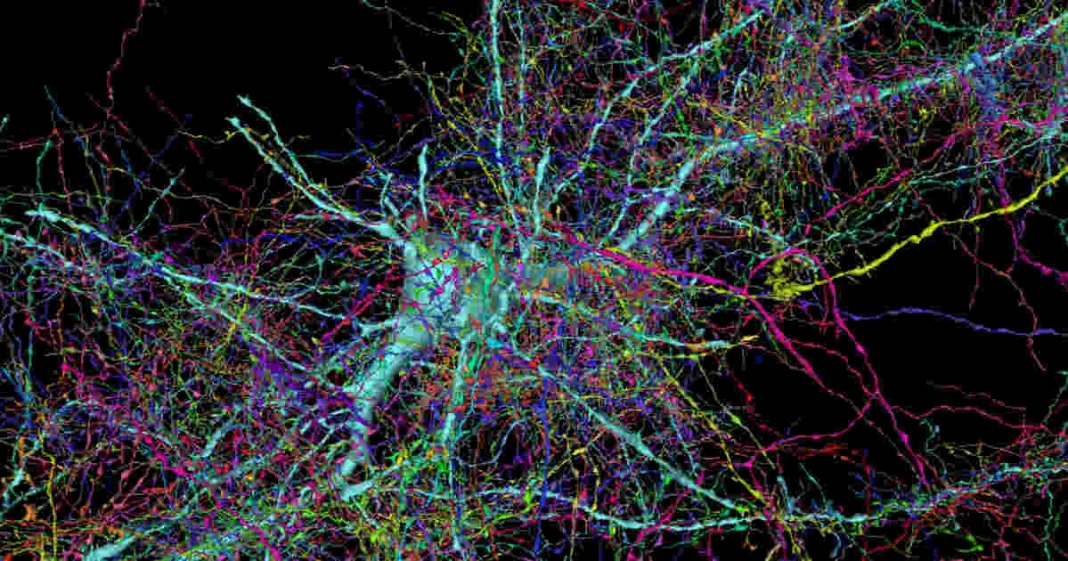Harvard University and Google have unveiled the most comprehensive map of human brain connections ever created. This monumental achievement focuses on a cubic millimeter of the cerebral cortex extracted from a patient who underwent epilepsy surgery in 2014. Over a decade of meticulous work by biologists and machine-learning experts has produced an unprecedented view of the brain’s wiring, offering new insights into its complex structure and potential implications for mental health and artificial intelligence.
Advanced Mapping Techniques
The journey to create this detailed brain map began with staining the brain tissue using heavy metals, which bind to lipid membranes in cells, making them visible under an electron microscope. The tissue was then embedded in resin and sliced into incredibly thin sections, each just 34 nanometers thick—a thickness much smaller than a human hair. This slicing transformed the complex 3D problem of mapping brain connections into a more manageable 2D one. The resulting slices were analyzed using advanced machine-learning algorithms developed in collaboration with Google, enabling the creation of a 3D model from the 2D images. This process generated a colossal dataset of 1.4 petabytes, equivalent to the data stored on more than 100,000 iPhones.
Read More: Neuralink’s First Brain-Chip Patient Shows Full Recovery and Mind-Controlled Mouse Navigation
Insights and Challenges
The resulting brain map reveals a wealth of information about the brain’s cellular structure. For instance, researchers identified neurons with over 50 synapses, a previously overlooked detail that could be crucial for understanding cortical processing. The map also brought to light unusual structures such as egg-shaped objects and tangled cells that defy current categorization. These enigmatic findings pose challenges for researchers, who must manually verify the vast amounts of data and resolve ambiguities in cell structures. This proofreading process is essential, as automatic segmentation—while powerful—is not infallible and requires human expertise to ensure accuracy.
Implications for Future Research
The brain map, now publicly accessible, opens up new avenues for research. Its potential applications are vast, ranging from advancing our understanding of mental health disorders such as schizophrenia to inspiring improvements in AI by mimicking brain functions. Jeff Lichtman, a Harvard professor leading the project, and his team did not embark on this venture with specific discoveries in mind. Instead, they aimed to create a “possibility to observe” the brain at an unprecedented level of detail, hoping that future insights will emerge from this foundational work.
Read More: Musk’s brain chip implanted in first human
Looking ahead, the Harvard team plans to scale up their research by mapping entire mouse brains and exploring additional regions of the human brain. This expansion will further enhance the already invaluable resource, providing even deeper insights into the intricacies of the brain’s wiring. As this research progresses, it holds the promise of not only advancing neuroscience but also potentially revolutionizing our understanding of the mind and how it can influence the development of next-generation AI systems.














